Kealia cowgirl: Sara Moore continues paniolo tradition at 12,000-acre ranch
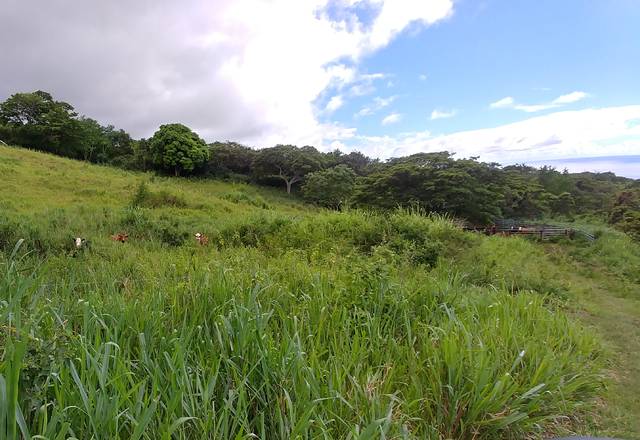
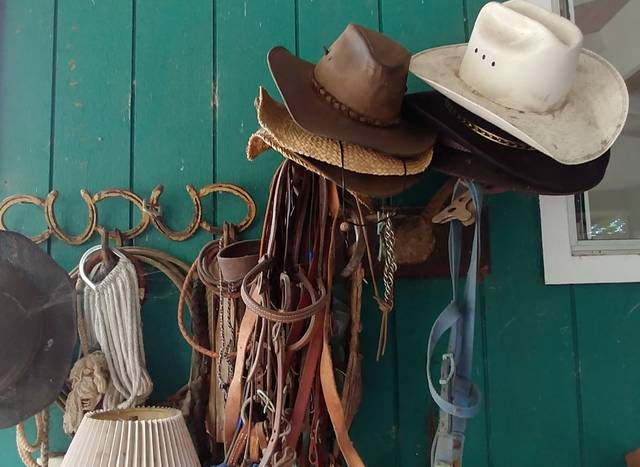
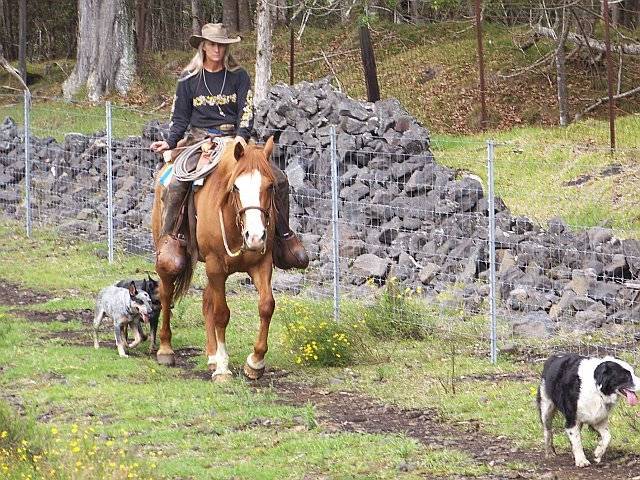
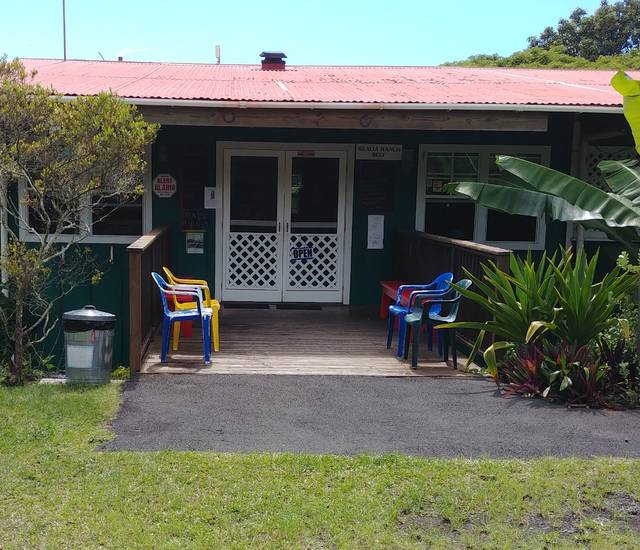
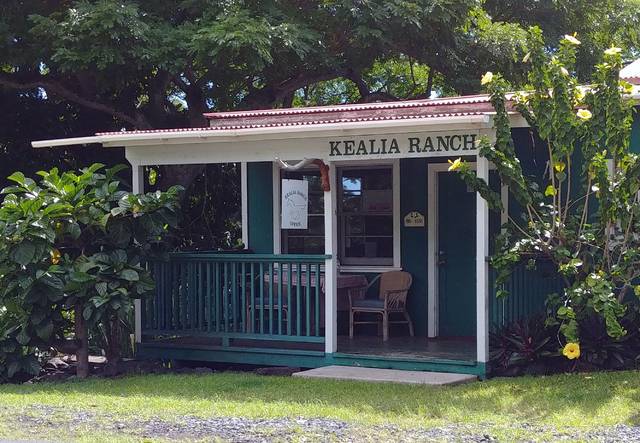
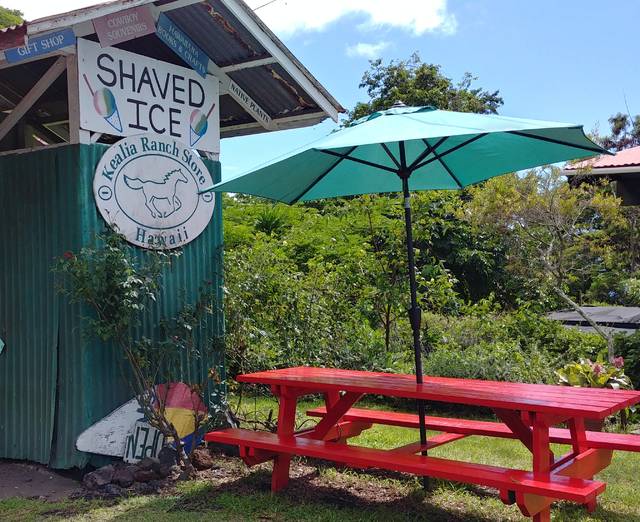
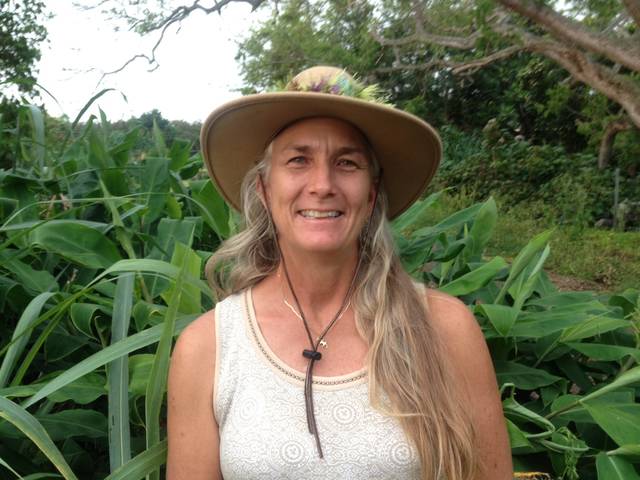
Almost 30 years ago, Sara Moore accepted a job at McCandless Ranch in South Kona, which began her long career as a rancher. She didn’t move right from college to ranching though. She enjoyed a few youthful adventures before launching her life as a cowgirl.
Almost 30 years ago, Sara Moore accepted a job at McCandless Ranch in South Kona, which began her long career as a rancher. She didn’t move right from college to ranching though. She enjoyed a few youthful adventures before launching her life as a cowgirl.
After growing up on Oahu and graduating from University of Hawaii-Hilo with an agricultural degree in tropical crop production, Sara was ready to travel.
I headed for Colorado,” Sara explained. “I wanted to check out the wild west.”
For three years she parlayed her ag degree taking jobs as a wrangler, a landscaper and a horse woman on a dude ranch. She also spent some time as a cook on a white water rafting company. When in Canyonlands, Utah, she met her future husband and they decided to return to Sara’s roots in Hawaii and start a family.
They settled in Honaunau and in 1989 she was hired to run the office at what was then the 66,000-acre McCandless Ranch in South Kona. Within a few years, she was leaving her desk occasionally to go out to ride the range with the cowboys and she loved every minute of it.
Sara’s family goes back four generations in Hawaii, though not in ranching. Her great-grandfather came here from Europe as a railway builder and eventually brought his Austrian wife. They stayed and raised their children in Hilo. One of their sons, Sara’s grandfather, became a manager at Paia sugar mill on Maui. Sara’s parents married and started their family on the Valley Isle. Although her early years were spent on Maui, eventually Sara’s parents moved the family to Oahu so they could pursue their careers in medicine. Many members of the extended family continue to live in the islands. It was at Sara’s relatives’ farm on Maui that she first learned to ride. By 10 years old, she was a horse lover.
“Living on Oahu, I sought out every fair that came to town offering pony rides,” she said. “I would spend the day, take short rides then get in line again. I’d ride all day if they’d let me.”
By the time she went to college, she knew she wanted to study agriculture. Her degree set her on a path for exploration and innovation in her chosen field. She was initially hired at McCandless Ranch to run the office and assist on their agro-forestry projects.
During her long tenure on the ranch, many things have changed. The McCandless ranch, founded by L.L McCandless in 1915, was originally 66,000 acres. In 1993, his heirs divided his holdings into three separate properties. Tita Stack from Oahu inherited the portion in the Kealia ahupuaa and it became Kealia Ranch. Sara stayed on but by that time had moved into a managerial position and was often out on the range.
Today, Kealia Ranch is 12,000 acres of somewhat steep and rocky range land that includes coffee and cacao farming as well as cattle ranching. The ranch also offers wild game hunting and has a store on the premises that sells their grass-fed beef. The store caters to tourists as well as locals by offering local crafts, T-shirts, hats and shave ice in addition to popsicles and smoothies made from their 50-year-old mapalehu mangos.
Sara shares her managerial responsibilities with her cohort Paul Kane. The two oversee the work of the other employees — three full-time ranch hands, a part-time waterman and a part-time secretary as well as a retired longtime employee who manages the cacao crop. All have a long history of working and living at the ranch.
Running a ranch is a multi-faceted job these days. Sara is responsible for land management and ranch maintenance as well as animal handling and health. She is involved in preparing cattle for market and in marketing the beef as well as the coffee and cacao. She shoulders the responsibility for administering the Natural Resources Conservation Service cost share programs that have helped with improvements on the ranch. She usually splits her time, spending half of her hours in the office and the other half, on horseback, in the field.
Early every morning, she and Paul meet with the ranch hands to discuss the tasks for the day. They often include things like branding and vaccinating calves, moving cattle between paddocks and managing the grasses for prescribed grazing. The daily schedule can also consist of removing downed trees, monitoring the water system or repairing fences and equipment. Whatever tasks await them, Sara is usually happiest riding the range on the horse she trained, Akamai.
Sara is definitely a part of Hawaii’s age old paniolo tradition, but the ways of the early cowboys have changed to a lot. Sara reports that ranching is much less macho these days. The new ways mean a more hospitable working environment with better animal treatment and improved husbandry. The changes have resulted in a higher quality product.
Today, the cattle are handled gently, their health is a primary concern and it is closely monitored. The horses are all well trained and treated with care. These changes have been made to fit current market demands for humane animal care, natural grass-fed stock with no GMO feed, no growth hormone use and source identification and verification.
Out on the range by four-wheel drive truck, Sara introduced me to a 100-acre part of the ranch where the cattle are “finished” in six different paddocks. All have sweeping views of the ocean beyond the acres of green pastureland. We visited a 16-acre paddock where 45 yearlings were grazing. The animals were fine seeing Sara approach but once they spotted me they bolted for protection under a huge tree. For some reason these 800 pound animals felt the need to protect themselves from the likes of me.
While watching the herd move through the tall grass, Sara expounded on how she experimented with different breeds of cattle. In her early years on the ranch, she wanted to find the best breed for the climate and terrain of South Kona. She pointed out the different breeds that are in the herd today. Old timers knew that the brown and white Herefords were very well suited to the Kealia environment.
Sara further explained, “Since the Herefords are a smaller breed, which is good cow size, we decided to try introducing bulls that were genetically larger. We added black Angus, red Angus and white French Charlolais into the market herd.”
The result was a nice hybrid steer with the slightly larger size and the higher quality beef from the Angus and Charlolais. The new breed is still small and agile enough to handle the local terrain easily, however.
Sara’s expertise goes beyond cattle. She also oversees the coffee and cacao acres and gets these crops to local distributors. The coffee goes to Hawaii Coffee Company. Bob Cooper of Original Hawaiian Chocolate Company buys the cacao beans and the Hawaii Cattle Producers Coop handles the beef.
In what little spare time Sara has she does livestock and forestry consulting for FarmWorks Hawaii and serves as president of the Hawaii Cattleman’s Association. She has also been instrumental in getting the local mobile slaughterhouse up and running. Owned by Big Island Resource Conservation and Development Council and operated by the Hawaii Island Meat Coop, the mobile unit is now located at Hokukano Ranch in Kealakekua but will soon be making stops around the island to serve farmers and ranchers who need a place to process their cattle, goats, sheep and hogs. Part of Sara’s volunteer efforts these days include setting up processing sites around the island as well as locations for the conversion of inedible waste from the mobile unit.
A dedicated rancher and a true cowgirl, Sara truly loves her busy life.
She was quick to point out, “Although my days of ranching have not made me financially rich, my life is very rich in many ways. I feel totally blessed to have this job.”
Like other ranch employees, she has a house on the ranch where she has been able to raise her three sons. They grew up enjoying the land where they could ride, hike, hunt and fish right where they lived. On holidays they often spent their vacation time in the ranch’s uplands at the 75-year-old ranch cabin.
Sara’s job comes with lots of benefits including health coverage as well as a constant supply of good, healthy food. She has also been able to take in orphaned or abandoned animals including her pet donkey Kale, an orphaned cow named Ally-Oop, a choice of good horses to ride and 10 working dogs, many of which she has personally trained. She even finds time to do leatherwork so that she can repair bridles and saddles that work well for her and the horses. She truly loves working with the animals and has trained many of them to help her herd. Her faithful dog Daisy traveled with us everywhere Sara and I went on my tour.
I came away from Kealia with a real sense of the riches that are inherent in the life of a modern cowgirl. Though not for everyone, the ranching lifestyle suits Sara Moore to a T.
Diana Duff is a plant adviser, educator and consultant living in a dryland forest north of Kailua-Kona.
Gardening Events
Saturday: “Community Seed Library Annual Seed Exchange” from 10 a.m. to noon on the lanai at the Kailua-Kona Public Library at 75-138 Hualalai Road. A video on seed saving will be followed by the seed exchange and refreshments to celebrate the 3rd year anniversary of the CSL. Bring seeds and cutting to share but not plants in soil. All are welcome. For more information call the library at 327-4327.
“Work Day at Amy Greenwell Garden” from 9 a.m. to 12:30 p.m. Meet at the Garden Visitor Center across from the Manago Hotel in Captain Cook. Volunteers will be able to help with garden maintenance and are invited to bring a brown bag lunch. Water and snacks provided. Call Peter at 323-3318 for more information.
Next Sunday: “Aston Movement for Gardening” from 9:30 a.m. to 12:30 p.m. at Nancy Redfeather’s Kawanui Farm in Honalo. Movement leaders Judith Aston and Brian Linderoth will teach healthy ways to approach gardening tasks. Gerry Herbert will share his knowledge of tool care. A potluck will follow the workshop. Tuition is $60 and class size is limited. To reserve a space or get more information, email Nancy Redfeather nancyredfeather@hawaii.rr.com or call 322-2801. For more information on Judith and Brian see: www.astonkinetics.com
Farmer Direct Markets
Wednesday: “Hooulu Farmers Market” 9 a.m. to 2 p.m. at Sheraton Kona Resort &Spa at Keauhou Bay
Saturday: “Keauhou Farmers Market” 8 a.m. to noon at Keauhou Shopping Center
“Kamuela Farmer’s Market” from 7 a.m. to noon at Pukalani Stables
“Waimea Town Market” from 7:30 a.m. to noon at the Parker School in central Waimea
“Waimea Homestead Farmers Market” from 7 a.m. to noon at the Waimea Middle and Elementary School Playground
Sunday: “Pure Kona Green Market” 9 a.m. to 2 p.m. at Amy Greenwell Garden in Captain Cook
“Hamakua Harvest” 9 a.m. to 2 p.m. at Highway 19 and Mamane Street in Honokaa
Plant Advice Lines
Anytime: konamg@ctahr.hawaii.edu
Tuesdays and Thursdays: 9 a.m. to noon at UH-CES in Kainaliu – 322-4893
Mondays and Fridays: 9 a.m. to noon at UH CES at Komohana in Hilo 98


